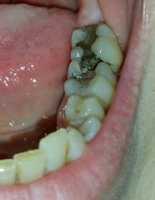Author Interviews, Dental Research, Genetic Research / 28.04.2019
Nature vs Nurture? Environment Play a Bigger Role in Dental Cavities
MedicalResearch.com Interview with:
Katrina Scurrah PhD
Senior Research Fellow (Biostatistician), Twins Research Australia, and Melbourne School of Population and Global Health, The University of Melbourne and
Honorary Fellow, Murdoch Childrens Research Institute.
MedicalResearch.com: What is the background for this study?
Response: Oral health is an important component of general health and yet dental caries (decay) is still common in children (affecting up to one in three 5-6 year old children in Australia). Although we know that some genetic and lifestyle factors (such as diet) are important risk factors for caries, the relative importance of these is still unclear. Risk factors from pregnancy and very early childhood (even before teeth appear) might also be important. This study is the first to include prospectively measured data on health and well-being from pregnancy, birth and early childhood in a study of twin children. We analysed data from a cohort of 172 pairs of twin children to assess the effects of genes and environment on susceptibility to dental caries at six years-of-age.
(more…)

